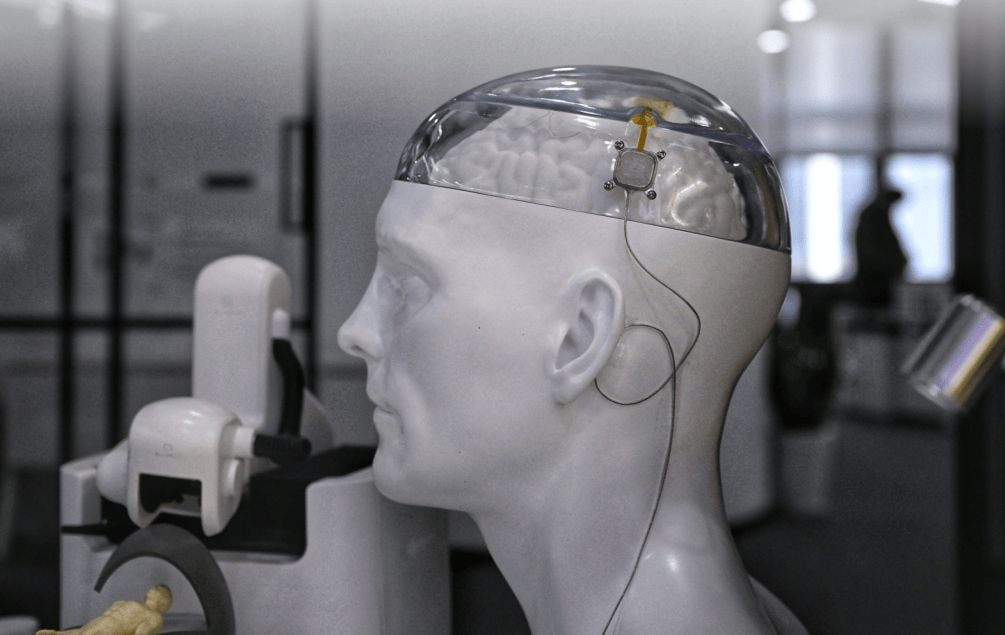
Recently, the Ministry of Industry and Information Technology, the National Development and Reform Commission, the Ministry of Education, the National Health Commission, the State-owned Assets Supervision and Administration Commission of the State Council, the Chinese Academy of Sciences, the State Food and Drug Administration and other seven departments jointly issued the "Implementation Opinions on Promoting the Innovation and Development of the Brain-Computer Interface Industry" (hereinafter referred to as the "Opinions"), which determined the "construction drawings" for the development of the brain-computer interface industry.
The opinion proposes to accelerate the breakthrough of implantable device research and development. Increase registration guidance and give priority support to key products such as implantable brain-computer interface medical devices.
Accelerate breakthroughs in the research and development of implantable devices
The opinion proposes that by 2027, breakthroughs will be made in key technologies of brain-computer interfaces, and advanced technical systems, industrial systems and standard systems will be initially established. The performance of core products has reached the international advanced level: high-density flexible electrodes, low-power neural signal processing chips, and the stability and response speed of the whole system.
Application scenarios should also "run". medical health to help paralyzed patients resume exercise and treat epilepsy/depression; industrial manufacturing uses "ideas" to control robotic arms and improve the safety of high-risk operations; Life consumption brain-controlled smart home, immersive game interaction. In a word: from the laboratory to the real world, you will see the real chapter within three years.
the further goal is 2030: the industrial innovation ability will be significantly improved; form a safe, reliable, independent and controllable industrial chain; Cultivate 2-3 leading enterprises with global influence, a number of "specialized, special and new" small and medium-sized enterprises, build an internationally competitive industrial ecology, and enter the forefront of the world in terms of comprehensive strength. This is not a small fight, but to build a "brain-computer Silicon Valley" in China, with the goal of aiming for the world's first echelon.
Clear requirements: accelerate breakthroughs, don't just research, and produce products
The opinions require accelerating breakthroughs in the research and development of implantable devices. Explore new products that integrate high-density neural recording sensors and ultra-low-power implantable chips, innovate brain intention recognition functions, and improve control accuracy and response speed. Improve mature products such as unidirectional and bidirectional deep brain stimulators, reactive electrical stimulators, and cochlear implants to improve the accuracy of signal acquisition and functional regulation, and strengthen the efficacy of nerve stimulation.
The opinion requires that non-implantable devices: let brain-computer interfaces "enter daily life". Innovate product forms such as forehead, ear, ear, and hairpin to promote the development of non-implantable products to be lightweight, high-speed, and low-power. Develop integrated brain-computer interface products such as helmets, headsets, glasses, and headphones, and support the iterative application and large-scale promotion of non-implanted products through integration and development with existing consumer products.
In addition, auxiliary equipment: "escort" the brain-computer interface. Develop auxiliary physiological signal equipment to improve the accuracy of interaction control and perceptual assessment through the fusion of brain signals with multi-modal signals such as electromyography, eye electrogram, electrocardiogram, and near-infrared. Develop high-precision surgical robots for implanted brain-computer interfaces, break through sub-micron precision control and dynamic adjustment technology, and improve regional accurate real-time imaging and 3D reconstruction capabilities.
Brain-computer interfaces are no longer "science fiction fantasy", but a national strategic project of "three ways in parallel", implantable to attack the "medical highland", non-implantable to "consumer popularization", and auxiliary systems to build a "technical base".
Strengthen brain-computer interface technology research and application demonstration
In terms of policy support, the opinions are clear, strengthen the research and application demonstration of brain-computer interface technology, promote the layout and implementation of a number of major projects, and strengthen the ability to collaborate on key problems. Promote the National Manufacturing Transformation and Upgrading Fund and the National Small and Medium-sized Enterprise Development Fund to increase investment, implement the special project of "financial integration of science and technology industry", give full play to the role of the national industry and finance cooperation platform, and drive more capital investment.
Increase registration guidance and give priority support to key products such as implantable brain-computer interface medical devices. Make good use of the first (set) and the first batch of insurance compensation policies to accelerate the implementation of industrialization.
At the level of technology application, the Center for Excellence in Brain Science and Intelligent Technology of the Chinese Academy of Sciences, together with Huashan Hospital Affiliated to Fudan University and related enterprises, successfully carried out China's first prospective clinical trial of implantable brain-computer interface, which marked that our country became the second country in the world to enter the clinical trial stage after the United States in terms of implantable brain-computer interface technology.
Expert reminder: Don't forget that "collaboration" is the key
Brain science is not a one-man battle, but a "multi-arms coordinated operation". Experts particularly emphasize that technology developers, hospitals, capital, and the government must work together to turn the "golden idea" of the laboratory into a "lifesaver" in the hands of patients.
But the real challenges are not small. Startups often face the dilemma of "short-term survival vs. long-term R&D"; may be forced to cut investment in core technologies in order to raise funds or go public; As a result, the product is getting shallower and shallower, and the technology is getting more and more biased. Therefore, capital should not only look at short-term returns, but also have the patience to "run with ten years".





